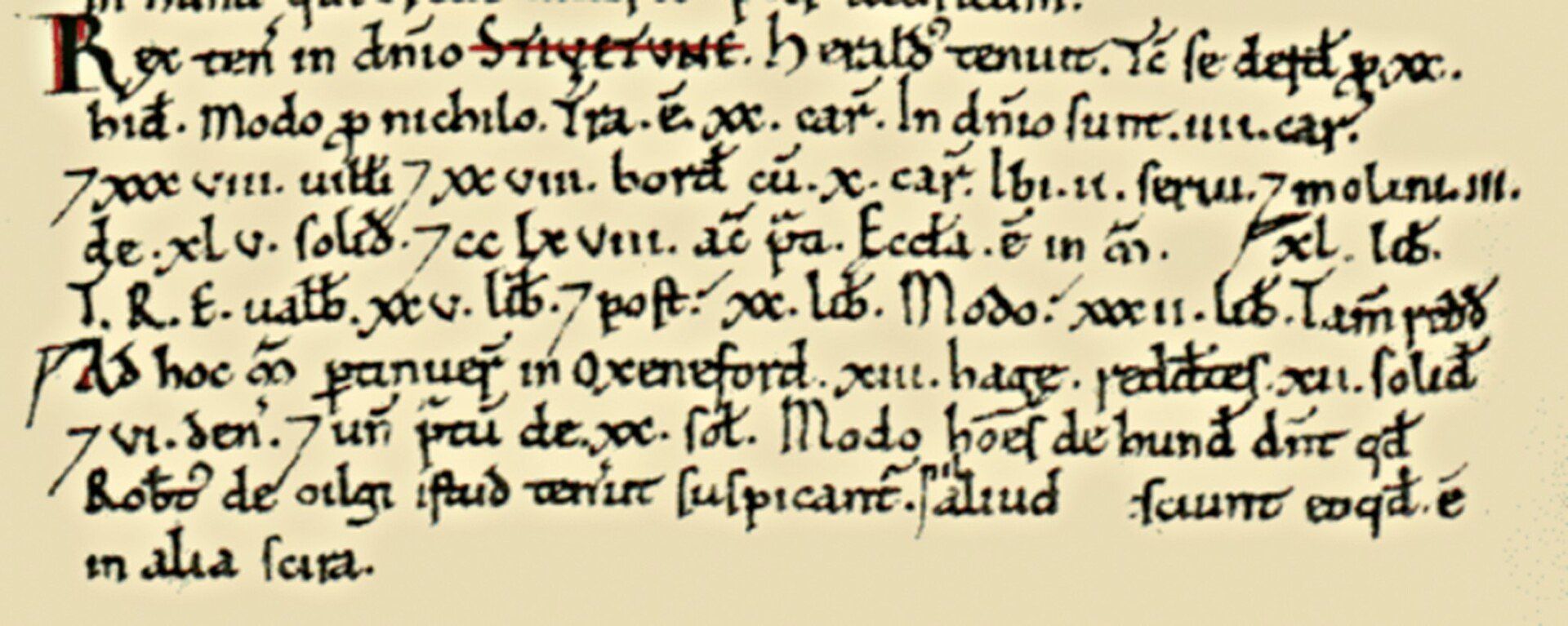Steventon and the Domesday Book
Twenty years after the Norman Conquest of England and the defeat of the Saxons at the battle of Hastings in 1066, William the Conqueror ordered a survey of all the lands of his new kingdom.
The Domesday Book, gives extraordinary insight into the structure of society and the economy. The clerks collecting the information worked to a standard formula and this aids comparison between communities and the observation of common themes. The starting point was who ‘held’ the lands and for Steventon, there was one single lord of our village: William I, King of England and Duke of Normandy. There was a minor but interesting adjunct to this in that a number of properties in Oxford seemed to have been attached to the lordship of Steventon and William had sub-let these to Robert D’Oyly, an important local magnate and sheriff of Oxfordshire. It appears that one of the purposes of Domesday Book was to value the lands of the kingdom for tax purposes. Steventon was a relatively large and potentially valuable community: it had lands for twenty plough teams, the equivalent of over two thousand acres of arable land.
Clearly, even at this early time, the heavy clay lands were farmed for crops. To cope with the amount of grain produced through the efforts of the peasant farmers, there were three mills driven by the Ginge Brook. In addition, there were meadow lands recorded at 268 acres, interestingly approximately the same area currently designated as liable to flooding by the Environment Agency. Meadow was important as it provided the fodder for the plough team oxen and other livestock of the village. All of this land was worked by a hierarchy of peasants comprising 28 villeins, 38 bordars and 2 slaves. This would suggest an overall population of around three hundred. To serve their spiritual needs, the village could also boast a church. As the village was the property of the crown, no tax was collected but no doubt the rents paid by peasants and the sale of agricultural produce delivered a healthy income for the crown.
Thus, on the face of it Steventon was a thriving community, even if its inhabitants were in various forms of servitude to their lord. However, there are hints in the Domesday entry that all was not as it seemed. Despite there being land for twenty plough teams, only fourteen were in action. Furthermore, the value of the land had fallen in value by twenty percent from before the Norman conquest to when William took possession of it shortly afterwards. Although the value had more than recovered since then, clearly something catastrophic had occurred at some stage to impoverish the community.
The clue lies in who ‘held’ the lands before William. It was none other than Harold, the former King of England, who met his demise at Hastings. Harold was considered a traitor by the Normans and revenge came not just through the ‘arrow in the eye’ death on Senlac Hill, but by the ravishing of his lands. Just to be a peasant on Harold’s land made you liable to share his punishment. In the late autumn of 1066, the Norman army arrived on the Berkshire Downs looking down on the villages of the Vale. As they advanced towards the river crossing at Wallingford, any village in their way suffered their wrath, especially those who were previously under the lordship of Harold. Steventon fell squarely in this category.
Steventon (Stivetune) entry in Domesday Book. .
